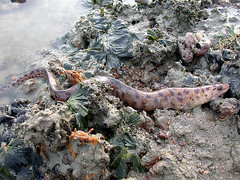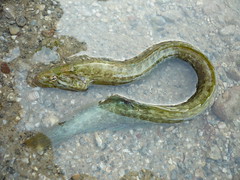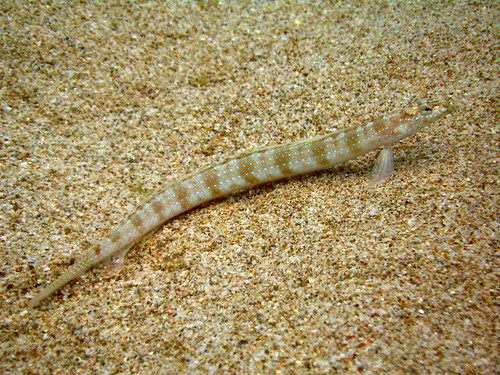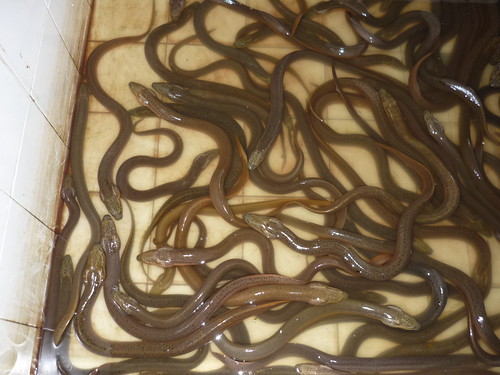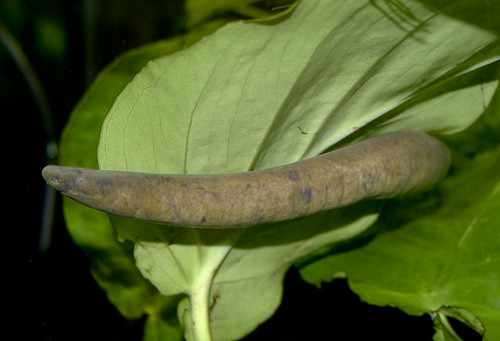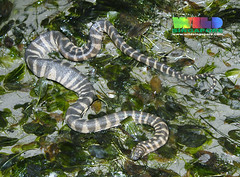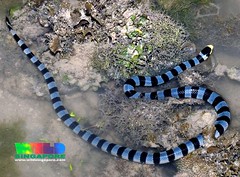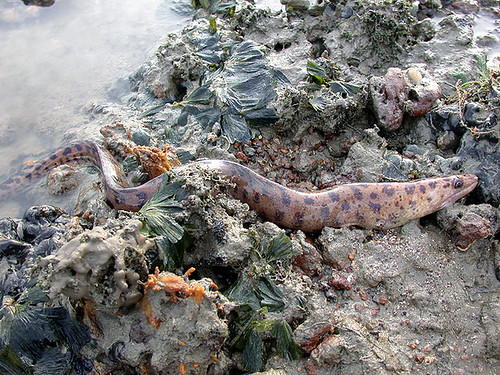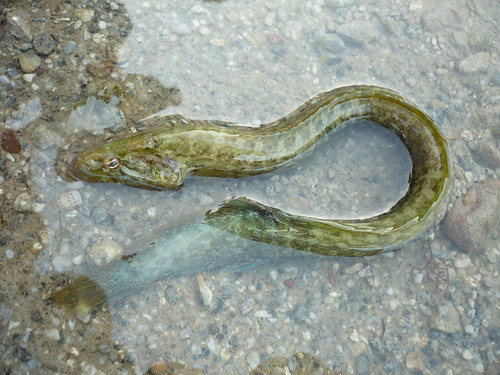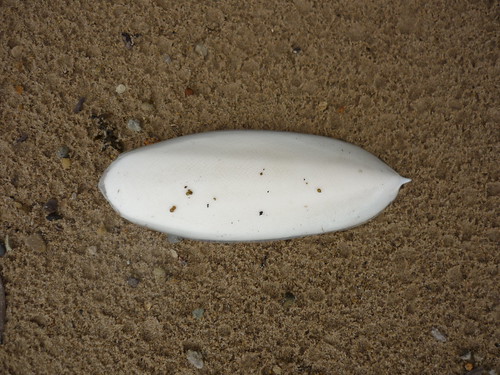
Cuttlefish (F. Sepiidae)
Pulau Semakau, 6th December 2008
Wild Fact Sheets
Online Guide to Chek Jawa
CephBase


A STOMPer saw these instant palm trees near the Marina Barrage may help add some greenery to the otherwise dull concrete environment there.
He said:
"This picture of some instant palm trees was taken near the Marina Barrage at Marina Mall.
"Each tree has a base covered with earth and surrounded with a large white plastic sheet, held in place by strong wire mesh.
"As this area is very windy the tree needs extra support from the white guy-ropes that run from the top of the trunk to the wooden spikes driven into the ground around the tree.
"Perhaps these palm trees are to be planted in the Gardens by the Bay (still under construction) or near the roads in the adjoining areas.
"As the Marina Barrage is mostly concrete these trees will provide a welcome change to the otherwise drab environment."
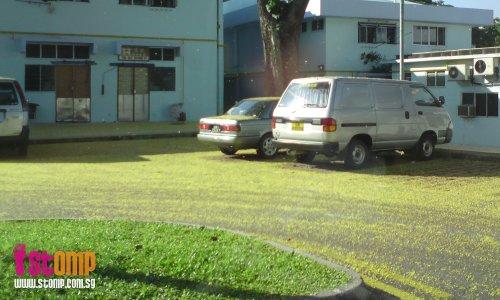
STOMPer Annoyed says that flowers from these trees planted in the carpark at Block 510 West Coast Drive, keep falling on the vehicles parked there and it is a hassle removing them.
This STOMPer says:
"This carpark is behind Block 510, West Coast Drive.
"Flowers shedding from a tree is covering the whole carpark.
"The carpark is unsightly with the flowers and it covers the entire road. It is a hassle to remove the flowers from the cars.
"I think the West Coast Town Council should not have such trees planted here.
"Hope something can be done."

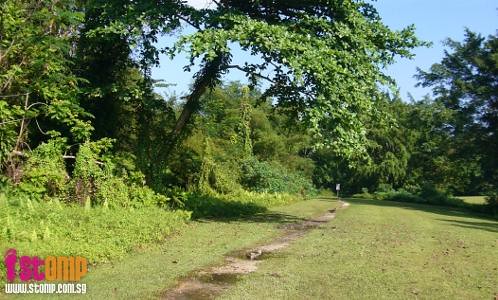
A regular jogger and visitor to the area, a STOMPer is upset that this trail leading to the treetop walk suffers from ponding, and says she hopes something can be done.
In her email to STOMP, the STOMPer said:
"I am a regular jogger at this spot, ( HSBC treetop walk, via Venus Drive ). Whenever it rains, water collected from the rain will remain at the pictured area. This location is at the start of the HSBC treetop walk, next to Venus Drive carpark.
"As you can see for yourself, visitors will have to get their footwear soiled/dirtied to cross this trail. The canopy this big tree is the cause of these, as it slows down the evaporation process of the collected rainwater. I have reported this to NEA fearing mosquitoes breeding. They replied saying they went to site to inspect, but found no breeding of mosquitoes. Still, the National Parks should do more to improve on these trails. I have some suggestions,
"1. use materials like those for constructing roads, as they will withstand the harsh weather and human traffic
2. construct a 2nd footpath outside the perimeter of this big tree, so that it would remain dry and usable at all times.
"I look forward to the relevant departments for their reply."
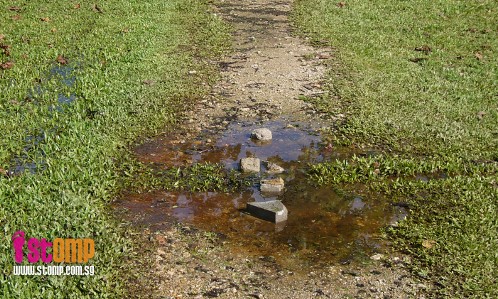
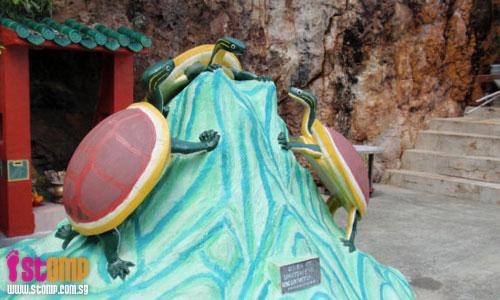
A STOMPer took a day trip to Kusu Island and was impressed with its beauty. Here are some pictures he took, which includes the famous temple known for its turtle pond. Says the STOMPer:
"This upgraded pier at Kusu Island was opened recently and every day shiploads of tourists come here to visit the turtle pond which Kusu is famous for.
"There is a pagoda and a cemented boardwalk for tourists who want to visit the temple.
"You can see three stone turtles in the temple and legend has it that in the early days when the sailors were shipwrecked, the giant turtle came to save these poor sailors.
"The live turtle pond there is kept by the temple caretaker. He feeds the turtles with kangkong everyday.
"There is also a sluice gate to the turtle pond. During the hot weather, the water dries up very fast and sea water is then let in through the sluice gate."
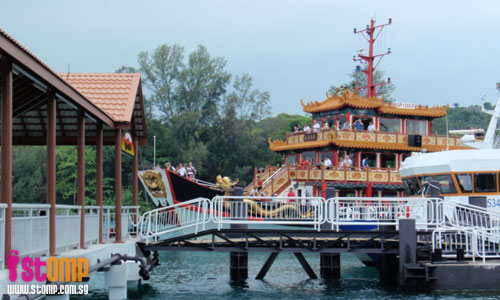
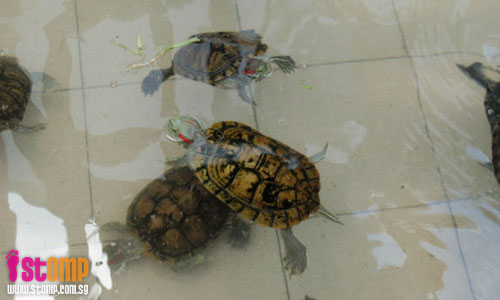

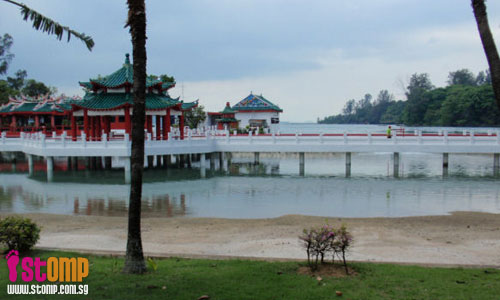

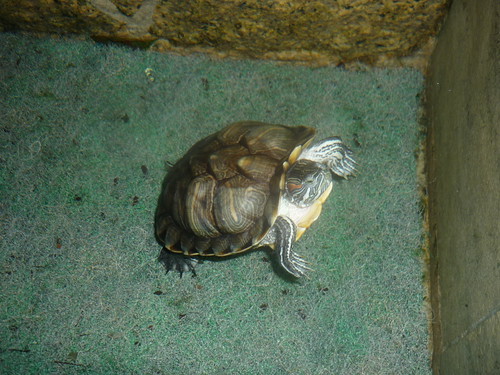


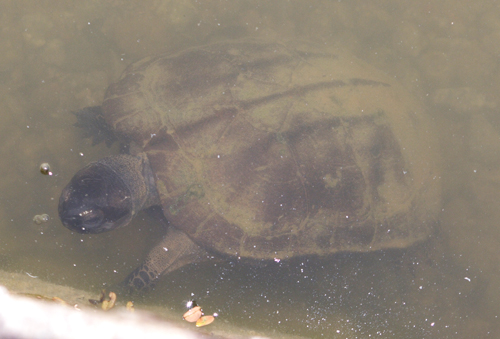
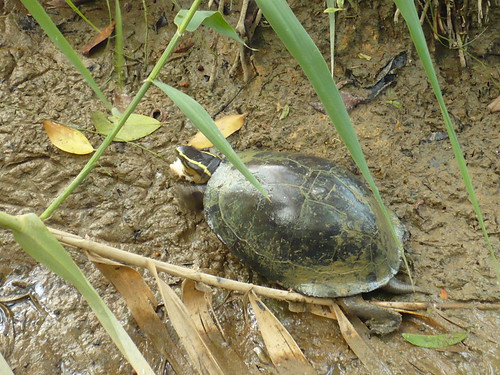

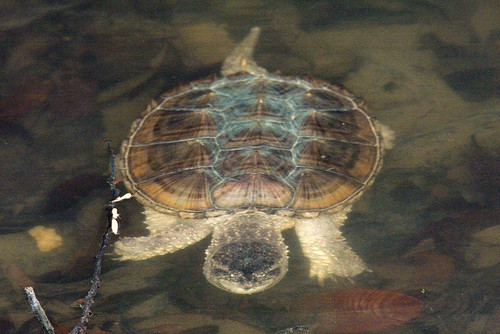

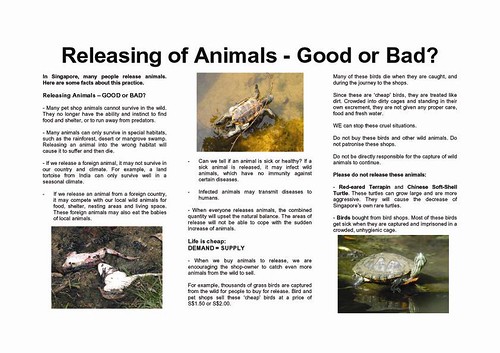
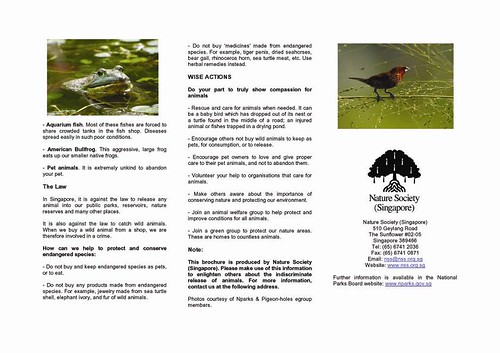
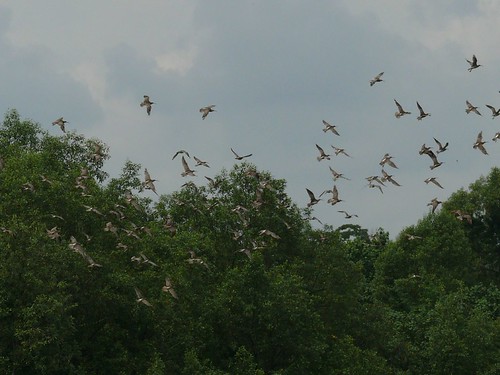



STOMPer Wong spotted this group of crows feasting on the carcass of a dead cat this morning and told STOMP that the sight was disturbing.
The 20-year-old sent an MMS to STOMP just minutes after he snapped the picture at 7:45am today (Mar 24).
"This took along Bishan Street 13 and I paused to take a look because it was unusual, but at the same time, very disturbing."


A STOMPer sends in these pictures of the early morning hours, as seen through the eyes of a Bukit Batok resident.
In his email, he says:
"These pictures were taken near the Bt Batok Nature Park early in the morning before the sun rose. You can see a crescent moon slowly descending as the sun makes its appearance. It was early and there were little traffic on the road.
"At early dawn you can see the orange glow of the street lamps and the red lights on the transmitting station to warn low-flying aircraft to keep clear. You can also see the silhoutte of the trees as the birds begin their daily chorus to herald the beginning of yet another day."


Some residents were seen fishing at the park connector beside Sungei Ulu Pandan last Sunday(22 March).
A STOMPer describes the scenes he saw:
"These pictures were taken at the park connector beside Sungei Ulu Pandan near Clementi Ave 4.
"On Sunday afternoon, some residents from the nearby HDB estate came here armed with fishing rods to try their luck in fishing.
"Some anglers managed to catch some tilapia after waiting for half an hour.
"Some children also swam in the river and they seemed to enjoy themselves."

